Climate benefits that make a genuine difference
Climate benefits that make a genuine difference
Glulam and CLT frames have a number of advantages when it comes to climate impact. Several studies have shown this. One of the most important is that carbon dioxide (CO2) is bound in the building throughout its lifespan. But how big an impact do Martinsons’ projects make? We decided to look at what we delivered in just one year.
In total, we delivered approximately 23 000 cubic metres of CLT and 13 000 cubic metres of glulam to projects around Sweden in 2021. Most popular were schools, office buildings and apartment buildings, but we also built industrial premises, agricultural sheds, sports halls and much more. Deliveries went to locations across the country, with a slight emphasis on northern Sweden and the area in and around Stockholm and Mälardalen.
We commissioned IVL Swedish Environmental Research Institute to produce environmental product declarations for our glulam and CLT, which have since been approved by EPD Norway. These third-party assessments show that, including raw material extraction and transport, one cubic metre of Martinsons’ CLT binds as much as 658 kg of net CO2 and that one cubic metre of glulam binds 679 kg of net CO2.*
But – what does this really mean for the environment?
This means that our customers have jointly ordered projects that bind approximately 24 000 tonnes of carbon dioxide – in the frame alone! This corresponds to the emissions of 14 000 average Swedes from their travel by road, air and other transport for an entire year**. In other words: as many people as live in the town of Strängnäs. Not bad!
The picture shows Korsningen, Örebro’s first office building made entirely of wood. Seven storeys high and 6 900 square metres in area, the building is environmentally certified in accordance with the Sweden Green Building Council’s Gold standard and its new NollCO2 certification. The goal is for the building to have net-zero carbon emissions during its lifetime.
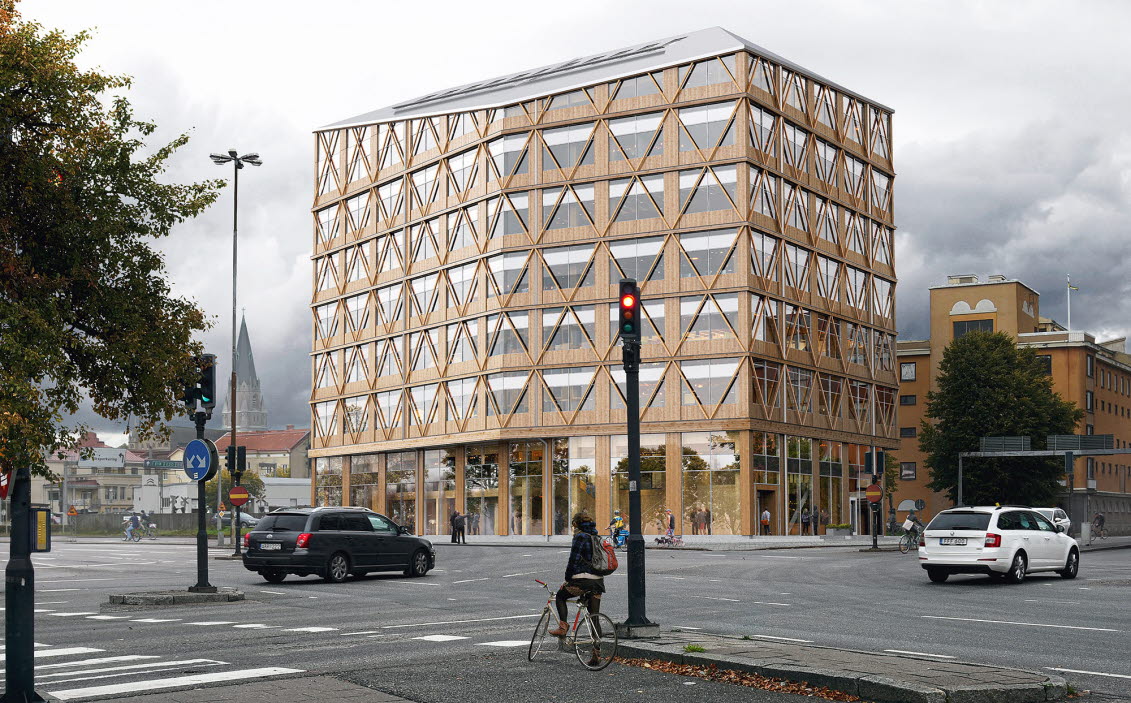
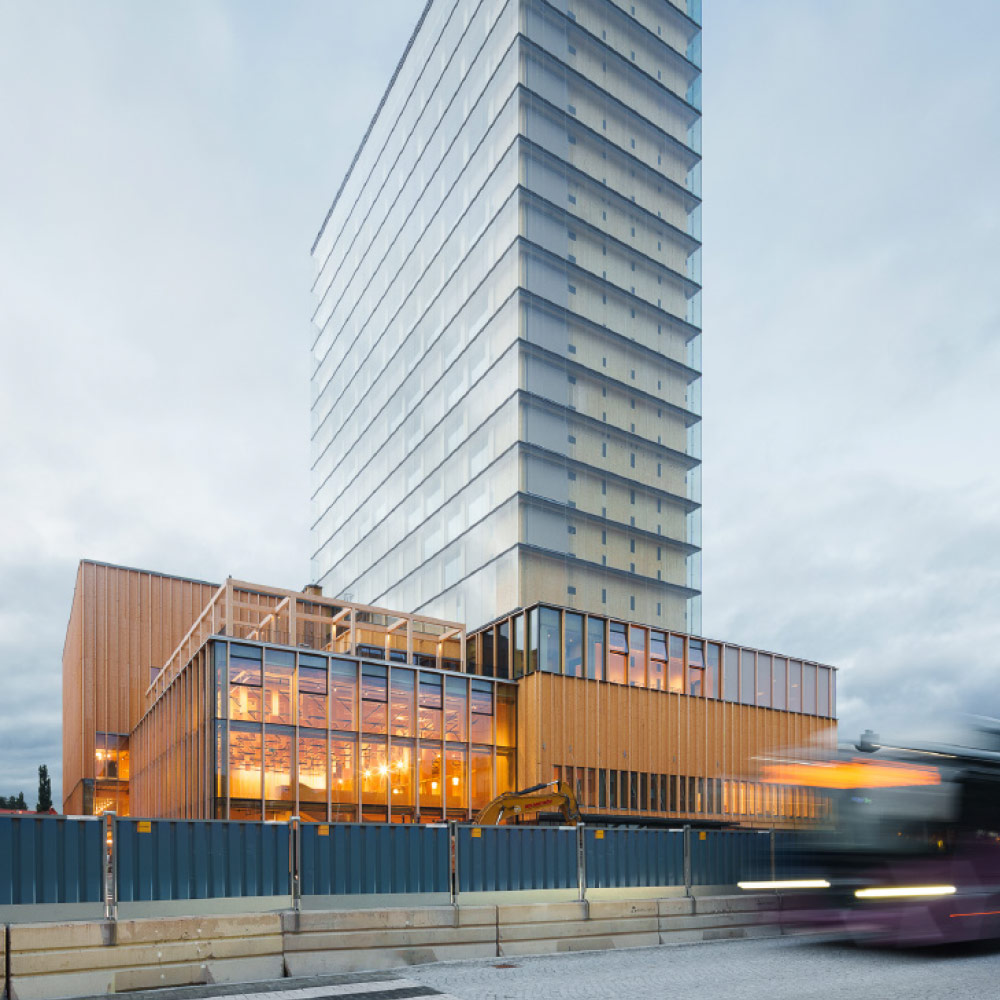
If we were to imagine that what is built in wood would otherwise be built in concrete, the effect is even higher. This is because the production of concrete creates net emissions amounting to around 250 kilograms of CO2 per cubic metre. This then makes the climate benefit of wood almost 29 000 tonnes of carbon dioxide – and we are gearing up from 14 000 Swedes to 18 000. Or from Strängnäs to Härnösand!
Pictured is the prestigious Sara Kulturhus, one of the world’s tallest buildings built in wood. With its 20 floors, the arts centre rises almost 80 metres up from the ground. Here, carbon dioxide is bound by more than 10 000 cubic metres of CLT and glulam.
If we look specifically at the schools that we were involved in building in 2021, our frames store about 4 000 tonnes of carbon dioxide – or the climate footprint of 150 000 students who TikTok for half an hour every day for an entire year.
Pictured is Morö Backe School, which was built with a large proportion of exposed wood. It has been shown that there are many advantages to building schools in wood. Not only in terms of cost, construction time and sustainability. But also for the children. Natural elements of exposed wood facilitate learning as the material provides a relaxed and comfortable feeling, which contributes to a lower heart rate and higher concentration. In other words, exactly the kind of learning environments that our children deserve.
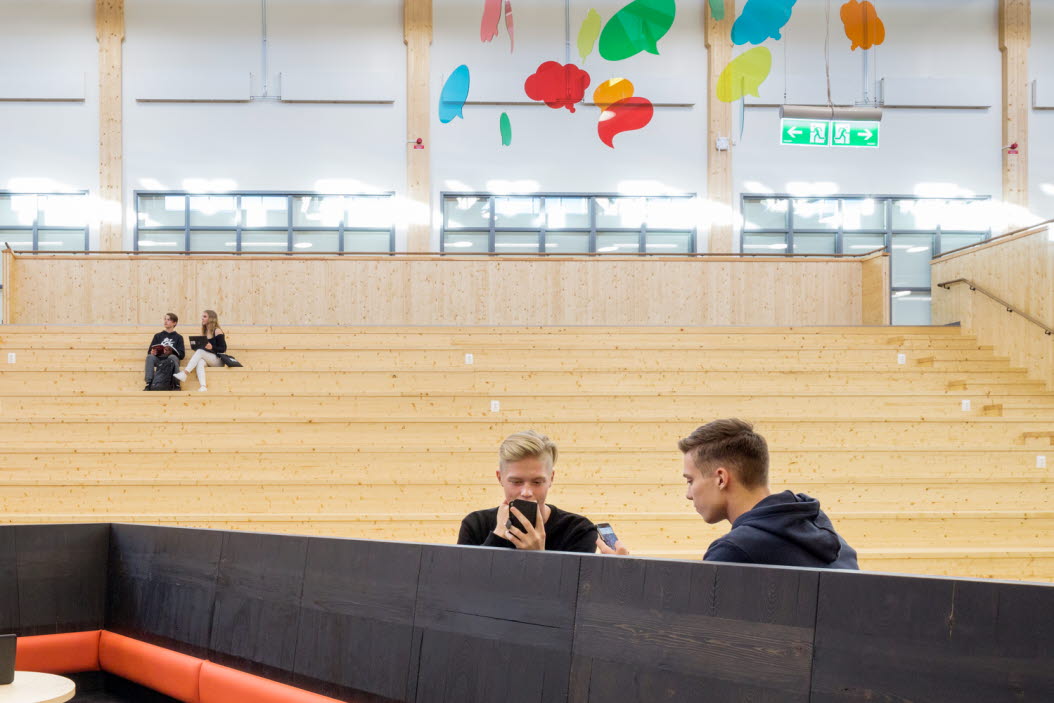
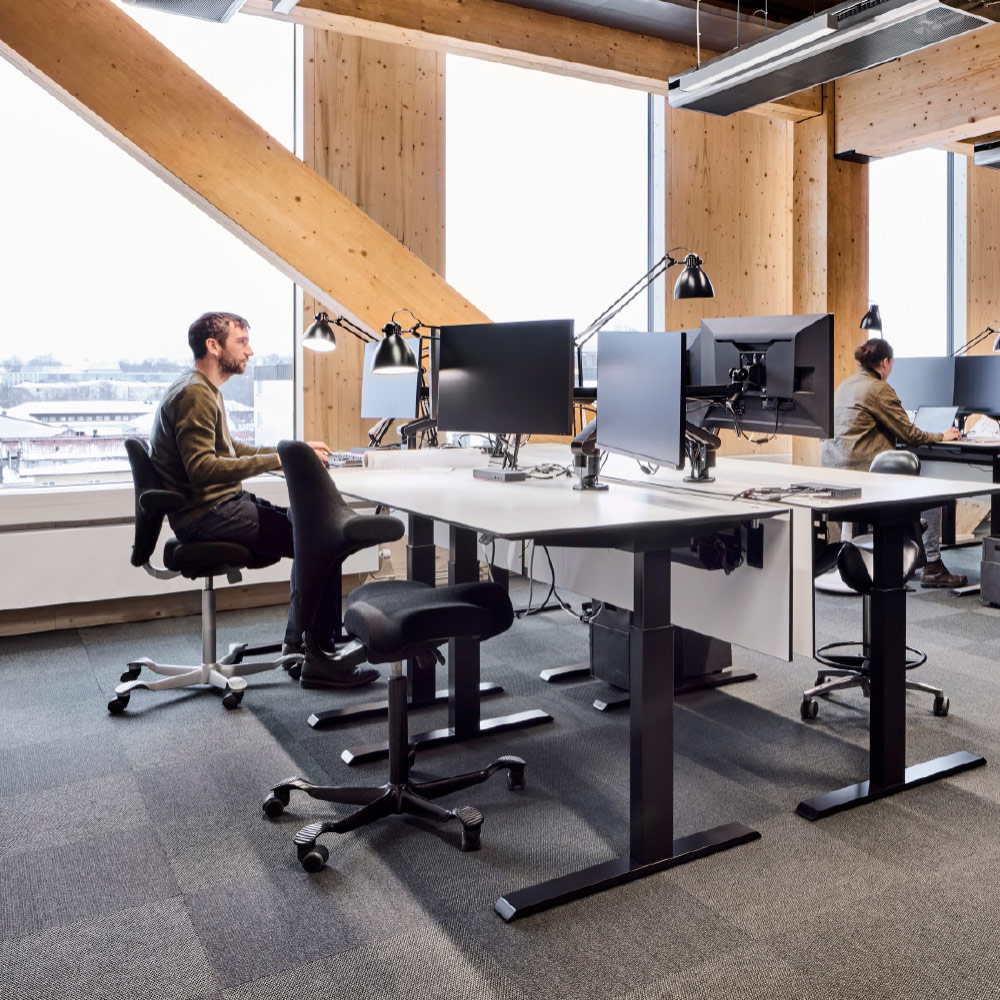
What about the office buildings? Here, the 3 000 tonnes that our frames bind are equivalent to 10 000 return business trips between Stockholm and London.**
Pictured is Magasin X in Uppsala, Sweden’s largest office building built in wood, with seven floors and a gross floor area of 16,600 m2.
For apartment buildings, the figure is about 4 500 tonnes of carbon dioxide, corresponding to about 3 300 average Swedes’ food consumption for a year.**
A view from inside Rind in Umeå, where Martinsons built rental apartments together with AR-bygg. In the picture you can also see the company’s enthusiastic CEO Anders Lindgren, who has played a key role in driving the development of wooden superstructures.
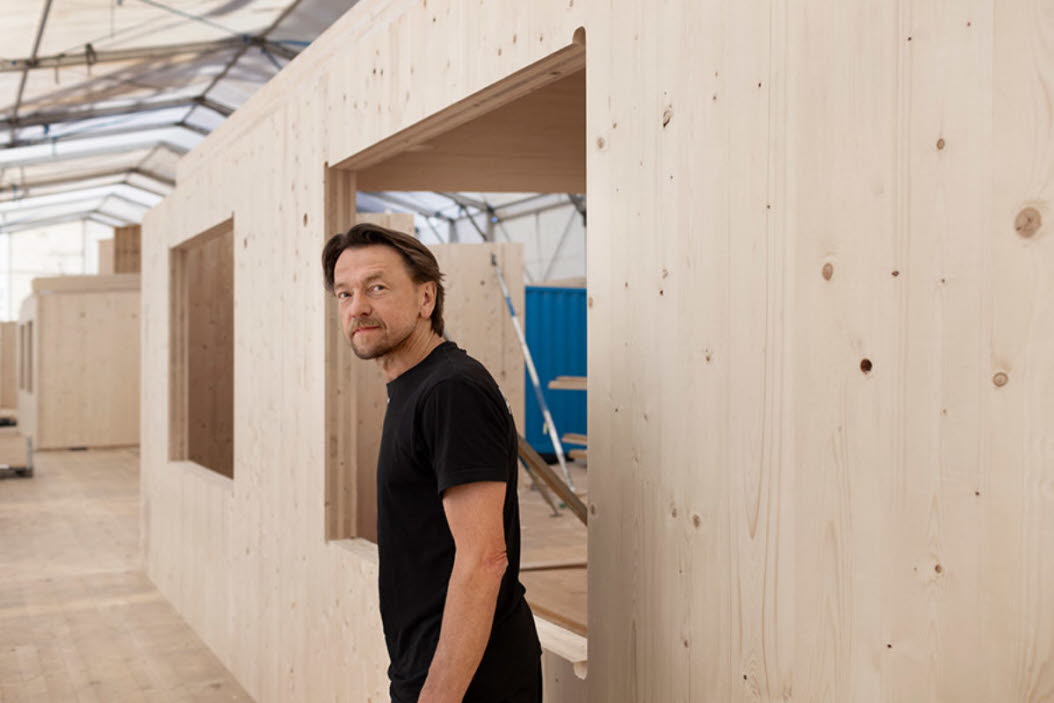

This is how our building components store CO2. The raw material from which we create CLT and glulam comes from the sustainably managed Swedish forests. And the forest extracts carbon dioxide (CO2) from the atmosphere in order to grow. The carbon atoms help build the trees and are stored in the growing biomass, which is later processed into building components. Carbon dioxide is released back into the atmosphere only when the building component has reached the end of its useful life and the materials are incinerated.
How we made our calculations
* Volume calculations for carbon dioxide stored in our own CLT and glulam are based on the Environmental Product Declarations (EPDs) carried out by IVL Swedish Environmental Research Institute and approved by EPD Norway: https://martinsons.se/byggnader-i-tra/limtra-och-kl-tra-for-byggnadsobjekt/kl-tra/certifieringar/
** Comparisons with traffic and consumption have been obtained from calculations produced by the Swedish Environmental Protection Agency and the Swedish Transport Agency:
https://www.naturvardsverket.se/amnesomraden/klimatomstallningen/omraden/klimatet-och-konsumtionen/hur-kan-jag-minska-min-klimatpaverkan/
https://www.transportstyrelsen.se/sv/luftfart/Miljo-och-halsa/Berakna-din-flygresas-utslapp/
In comparisons with concrete, we have used EPD Norway’s study of Swedish concrete for indoor floors (most of the content is in swedish):
https://www.epd-norge.no/getfile.php/137262-1490683923/EPDer/Byggevarer/Betongvarer/NEPD-1296-419_Betong-f–r-beam–lk-indoor-standard.pdf
For social networks, our benchmarks come from Government Technology:
https://www.govtech.com/question-of-the-day/what-social-media-site-has-the-biggest-carbon-footprint

